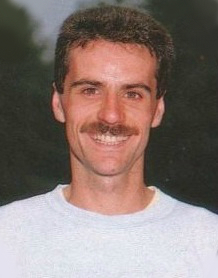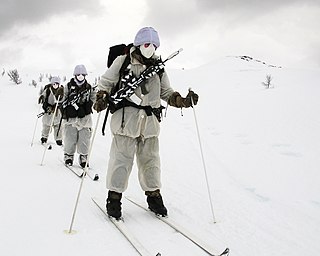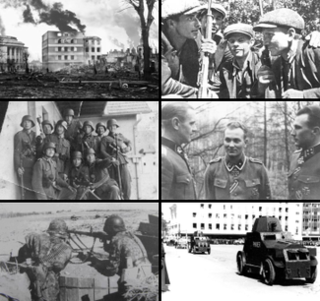Related Research Articles

Finland, officially the Republic of Finland, is a Nordic country in Northern Europe. It shares land borders with Sweden to the west, Russia to the east, and Norway to the north, and is defined by the Gulf of Bothnia to the west and the Gulf of Finland of the Baltic Sea across Estonia to the south. Finland covers an area of 338,455 square kilometres (130,678 sq mi), with a population of 5.5 million. Helsinki is the country's capital and largest city, but together with the neighboring cities of Espoo, Kauniainen and Vantaa, it forms a larger metropolitan area. Finnish, the native language of the Finns, is among the few Finnic languages in the world. The climate varies relative to latitude, from the southern humid continental climate to the northern boreal climate. The land cover is primarily a boreal forest biome, with more than 180,000 recorded lakes.

The History of Finland begins around 9,000 BC during the end of the last glacial period. Stone Age cultures were Kunda, Comb Ceramic, Corded Ware, Kiukainen, and Pöljä cultures. The Finnish Bronze Age started in approximately 1,500 BC and the Iron Age started in 500 BC and lasted until 1,300 AD. Finnish Iron Age cultures can be separated into Finnish proper, Tavastian and Karelian cultures. The earliest written sources mentioning Finland start to appear from the 12th century onwards when the Catholic Church started to gain a foothold in Southwest Finland.

The Winter War also known as First Soviet-Finnish War was a war between the Soviet Union (USSR) and Finland. It began with a Soviet invasion of Finland on 30 November 1939, three months after the outbreak of World War II, and ended three and a half months later with the Moscow Peace Treaty on 13 March 1940. Despite superior military strength, especially in tanks and aircraft, the Soviet Union suffered severe losses and initially made little headway. The League of Nations deemed the attack illegal and expelled the Soviet Union from the organisation.

Espoo is a city and municipality in the region of Uusimaa in the Republic of Finland. It is located on the northern shore of the Gulf of Finland, bordering the cities of Helsinki and Vantaa, while surrounding the enclaved town of Kauniainen. The city covers 528.03 square kilometres (203.9 sq mi) with a population of 292,913 residents in December 2020, making it the 2nd-most populous city in Finland. Espoo forms a major part of a substantially larger metropolitan area known as Greater Helsinki, home to over 1.5 million people in 2020.

The Great Northern War (1700–1721) was a conflict in which a coalition led by the Tsardom of Russia successfully contested the supremacy of the Swedish Empire in Northern, Central and Eastern Europe. The initial leaders of the anti-Swedish alliance were Peter I of Russia, Frederick IV of Denmark–Norway and Augustus II the Strong of Saxony–Poland–Lithuania. Frederick IV and Augustus II were defeated by Sweden, under Charles XII, and forced out of the alliance in 1700 and 1706 respectively, but rejoined it in 1709 after the defeat of Charles XII at the Battle of Poltava. George I of Great Britain and the Electorate of Hanover joined the coalition in 1714 for Hanover and in 1717 for Britain, and Frederick William I of Brandenburg-Prussia joined it in 1715.

The 1952 Summer Olympics, officially known as the Games of the XV Olympiad and commonly known as Helsinki 1952, were an international multi-sport event held from 19 July to 3 August 1952 in Helsinki, Finland.

Suomenlinna, or Sveaborg (Swedish), is an inhabited sea fortress built on eight islands about 4 km southeast of the city center of Helsinki, the capital of Finland. Suomenlinna is a UNESCO World Heritage Site that is popular with tourists and locals, who enjoy it as a picturesque picnic site. Originally named Sveaborg, or Viapori as referred to by Finnish-speaking Finns, it was renamed in Finnish to Suomenlinna in 1918 for patriotic and nationalistic reasons, though it is still known by its original name in Sweden and by Swedish-speaking Finns.
The Russo-Swedish War of 1741–1743 was instigated by the Hats, a Swedish political party that aspired to regain the territories lost to Russia during the Great Northern War, and by French diplomacy, which sought to divert Russia's attention from supporting its long-standing ally the Habsburg monarchy in the War of the Austrian Succession. The war was a disaster for Sweden, which lost more territory to Russia.

The Finnish War was fought between the Kingdom of Sweden and the Russian Empire from 21 February 1808 to 17 September 1809. As a result of the war, the eastern third of Sweden was established as the autonomous Grand Duchy of Finland within the Russian Empire. Other notable effects were the Swedish parliament's adoption of a new constitution and the establishment of the House of Bernadotte, the new Swedish royal house, in 1818.

The Communist Party of Finland was a communist political party in Finland. The SKP was a section of Comintern and illegal in Finland until 1944.

The Russo-Swedish War of 1788–1790 was fought between Sweden and Russia from June 1788 to August 1790. The war was ended by the Treaty of Värälä on 14 August 1790. The war was, overall, mostly insignificant for the parties involved.

Alberto Cova is a retired Italian long-distance track athlete, winner of the 10,000 m at the 1984 Summer Olympics and 1983 World Championships.

Cold-weather warfare, also known as Arctic warfare or winter warfare, encompasses military operations affected by snow, ice, thawing conditions or cold, both on land and at sea. Cold-weather conditions occur year-round at high elevation or at high latitudes, and elsewhere materialise seasonally during the winter period. Mountain warfare often takes place in cold weather or on terrain that is affected by ice and snow, such as the Alps and the Himalayas. Historically, most such operations have been during winter in the Northern Hemisphere. Some have occurred above the Arctic Circle where snow, ice and cold may occur throughout the year. At times, cold or its aftermath—thaw—has been a decisive factor in the failure of a campaign, as with French invasion of Russia in 1812, the Soviet invasion of Finland in 1939, and the German invasion of the Soviet Union during World War II.
Vi Menn, is Europe and Norway's largest weekly lifestyle magazine for men. Founded in 1951 the magazine is one of the earliest publications targeting men. It is based in Oslo, Norway.
Able Archer 83 was the annual NATO Able Archer exercise conducted in November 1983. The purpose for the command post exercise, like previous years, was to simulate a period of conflict escalation, culminating in the US military attaining a simulated DEFCON 1 coordinated nuclear attack. The five-day exercise, which involved NATO commands throughout Western Europe, was coordinated from the Supreme Headquarters Allied Powers Europe (SHAPE) headquarters in Casteau, Belgium.

Before the outbreak of the Second World War, Germany and the Soviet Union signed the German-Soviet Nonaggression Pact, concerning the partition and disposition of sovereign states, including Estonia, and in particular its Secret Additional Protocol of August 1939.
There were two waves of the Finnish prisoners of war in the Soviet Union during World War II: POWs during the Winter War and the Continuation War.

According to the 2012 U.S. Global Leadership Report, 48% of Finnish people approve of U.S. leadership, with 34% disapproving and 18% uncertain.

Finland–Russia relations have been conducted over many centuries, from wars between Sweden and Russia in the early 18th century, to the planned and realized creation and annexation of the Grand Duchy of Finland within the Russian Empire during Napoleonic times in the early 19th century, to the dissolution of the personal union between Russia and Finland after the abdication of Russia's last czar in 1917, and subsequent birth of modern Finland, with support of the bolshevik (Soviet) Russian government. Finland had its own civil war with minor involvement by Soviet Russia, was later invaded by the USSR, and had its internal politics influenced by it. Relations since then have been both warm and cool, fluctuating with time. Russia has an embassy in Helsinki, a consulate-general in Turku and consulates in Lappeenranta and Mariehamn. Finland has an embassy in Moscow, a consulate-general in Saint Petersburg and two branches of the consulate.
Aatami was a Finnish language men's magazine that was in circulation between 1944 and 1954 and was the first magazine specifically targeted male readers in Finland. The first issue appeared in December 1944. The magazine considered its readers as fellow soldiers who returned home from World War II and now attempted to create a peaceful society in Finland. However, if the soldiers committed crimes, Aatami called them hooligans who were not genuine frontline soldiers.
References
- 1 2 3 4 5 Laura Saarenmaa (2015). "Political Nonconformity in Finnish Men's Magazines during the Cold War". In Henrik G. Bastiansen; Rolf Werenskjold (eds.). The Nordic Media and the Cold War (PDF). Göteborg: Nordicom. pp. 103, 106. ISBN 978-91-87957-15-4.
- 1 2 3 Ari-Matti Auvinen (1983). "Humalassa se onnistuu vieraan kanssa". Alkoholipolitiikka. 48: 214.
- ↑ "Gritstoneberget". 27 Crags. Retrieved 5 September 2021.